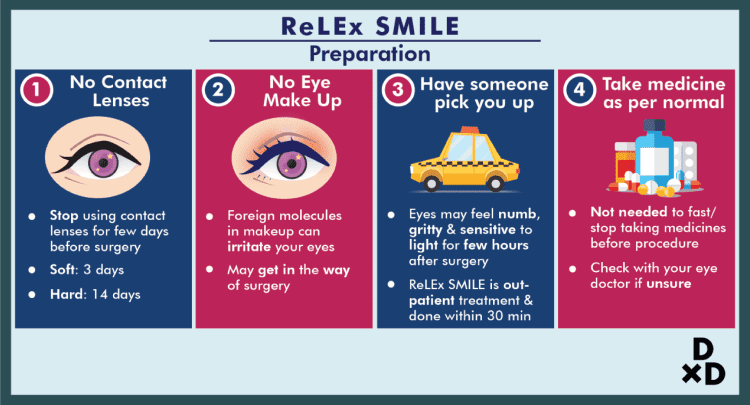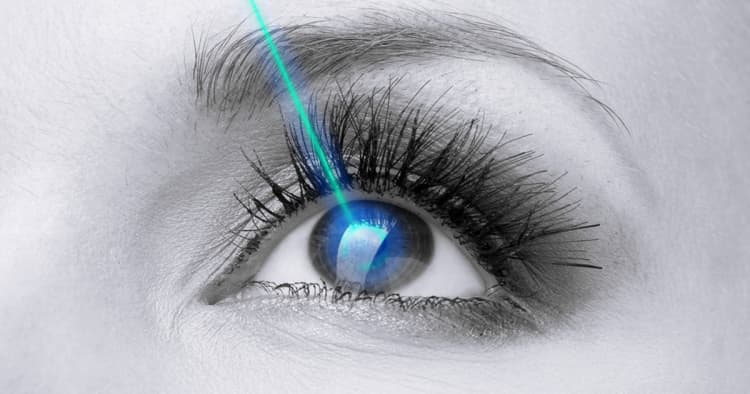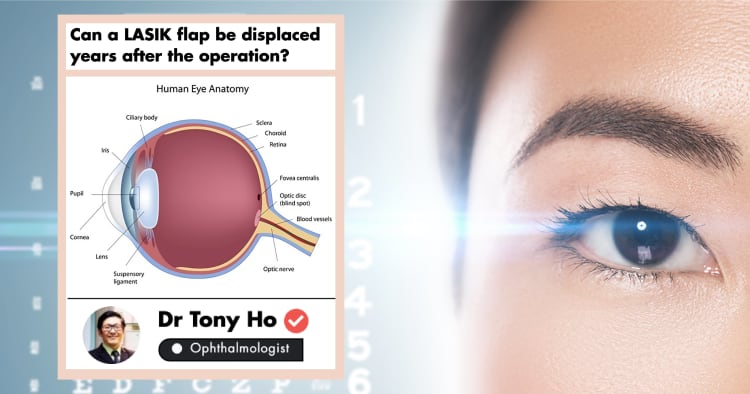ReLEx SMILE is a laser eye surgery carried out by eye specialists to treat astigmatism and myopia in Singapore. It is a minimally invasive procedure that aims to help you gain independence from glasses and contact lenses.
What are the Different Types of Laser Vision Correction?
I am sure that you have heard about similar procedures such as LASIK and Advanced Surface Ablation (ASA). There are also different types of ASA such as PRK, epi-LASIK, LASEK, and TransPRK. All these methods exist to treat different eye conditions. That said, your suitability also depends on the shape and anatomy of your eye.
Blurry vision can be a problem that affects your quality of life and performance at work or in school. Although most people wear glasses and contact lenses to address that, they can still be an inconvenience.
In this article, I will discuss how ReLEx SMILE can be a suitable option for you, explain its treatment process, and compare it with other treatments.
What is ReLEx SMILE?

ReLEx SMILE stands for Refractive Lenticule Extraction Small Incision Lenticule Extraction.
It is a minimally invasive surgery performed with the Zeiss VisuMax femtosecond laser. It is suitable for:
- Short-sightedness (myopia): -1.00 (100 degrees) to -10.00 (1000 degrees)
- Astigmatism: up to -3.50 (350 degrees)
ReLEx SMILE is not suitable for long-sightedness (hyperopia).
ReLEx SMILE has been around for more than 10 years and is USFDA-approved. Research has shown that it is as effective as other treatment methods such as LASIK and ASA [1].
The surgery is flapless, leaving the outer corneal layer intact. The incision is also much smaller than the one made in LASIK. This affects the nerves to a lesser degree, thus decreasing the chances of complications such as dry eyes after the procedure.
This is not to say that ReLEx SMILE is always the best option for you. You should always get a detailed consultation with an eye doctor to determine which method is most suitable for your condition and lifestyle.
What are the benefits of ReLEx SMILE?
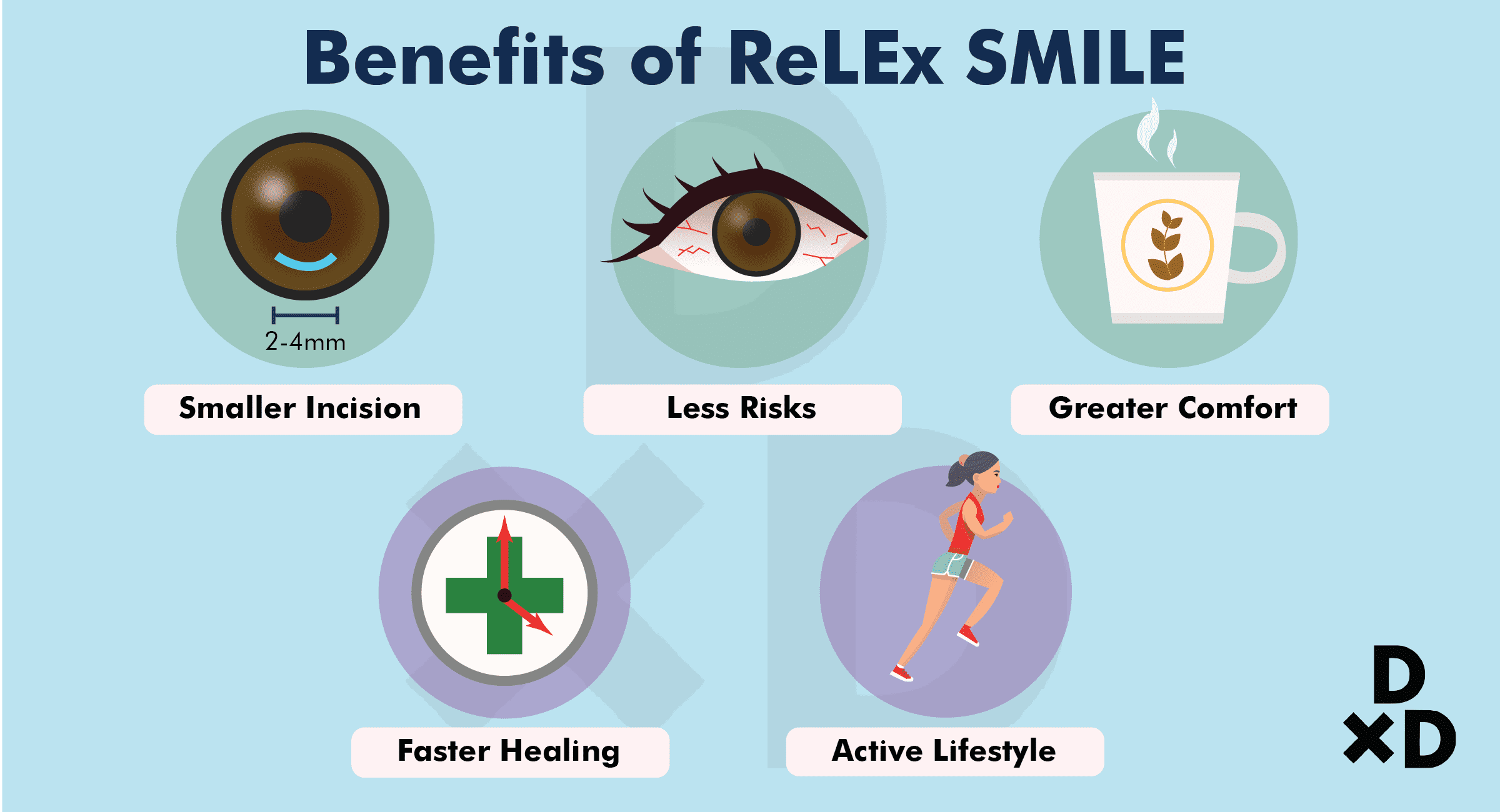
The procedure involves creating a corneal tissue (lenticule) and a 2-4 mm incision. This is a minimally invasive procedure that removes the need to create a flap, unlike LASIK. The benefits of ReLEx SMILE are: [1]
Smaller incision
It only needs a 2-4 mm incision. This is much smaller than that of LASIK which requires a 22 mm incision.
Less risk of complications
The surgery does not involve the creation of a flap. As a result, there is no risk of flap displacement or dislodgement.
In summary, ReLEx SMILE, being a minimally invasive and flapless surgery, has lower chances of causing dry eye and visual discomfort during the recovery period. In addition, it has the potential to maintain greater corneal stability for the long term which can reduce the risk of ectasia and regression of surgical results [2].
Faster healing time
You should gain back about 80% of your vision within 3 days after the surgery, after which you may resume work.
Vision will continue to improve 1 to 3 months after the procedure. It will usually stabilise at 3 months.
Improved Cornea Stability
ReLEx SMILE creates a smaller 4mm incision. This has the potential to provide greater cornea stability and lowers the risk of a rare LASIK complication known as corneal ectasia.
Suitable for people who do contact sports
With no flap created, it is suitable for those with a very active lifestyle. For instance, ReLEx SMILE can be a more suitable choice for those who do contact sports or any other hobbies with some risk of head trauma [3]. That said, there is still a recovery period where you have to abstain from these activities. Consult your eye doctor before taking part in sports.
Is ReLEx SMILE suitable for me?

Some people think that laser eye surgery is suitable for everyone. In reality, that is not the case. Be it ReLEx SMILE, LASIK, or ASA, there are still some contraindications.
ReLEx SMILE is not suitable for you if: [4]
- Below 18 years old. Your eye prescription still tends to fluctuate
- Eye prescription that has not been stable for the past 12 months
- Other eye conditions such as cataract and glaucoma
- Very thin, irregular or steep corneas
- Severe cases of dry eye syndrome
- Hyperopia (long-sightedness)
- Astigmatism only (absence of myopia)
- Pregnant or breastfeeding women
- Poor overall health
No matter which treatment you are considering, you should always consult an eye doctor beforehand. The same degree of myopia can present differently in different people so it is best to get a detailed check. The treatment that is suitable for you will depend on your condition and the anatomy of your eye.
If you are interested in getting a ReLEx SMILE, it is best to start with a consultation. An eye doctor is the best person to guide you to the most suitable procedure!
How is ReLEx SMILE performed?

As mentioned earlier, the surgery is done with a femtosecond laser. It is minimally invasive and can be done within 15 minutes for both eyes if performed by an experienced surgeon. Before the procedure, your eyes will be numbed with eyedrops.
The next steps are as follow: [5]
Creation of the lenticule and incision
The laser creates a pre-determined lenticule close to the refraction target. A lenticule is a disc-shaped piece of corneal tissue right beneath the outermost layer of the cornea. After the lenticule is created, a small incision between 2-4 mm is made.
Removal of the lenticule
The lenticule is removed through the small incision. The small incision allows most of the cornea to remain untouched during the whole procedure.
Vision correction
The removal of the lenticule results in a change of corneal shape. It is this change that corrects your vision.
What to expect after the ReLEx SMILE surgery?
After the numbing effect wears off, your eyes may feel gritty. You may also start tearing. Not to worry, the sensation will normalise over the next 2-3 days.
Your eye doctor will give you some specific post-operatic instructions. Most people recover about 80% of their vision within 3 days. You are also expected to return to your eye doctor for the post-operation day 2 review. Y This is to rule out any infection and ensure a smoother recovery process.
Following that, you may have to go for further reviews 1 week, 3 weeks and 6 months after. This is compulsory to ensure smooth healing.
What is the recovery process for ReLEx SMILE like?
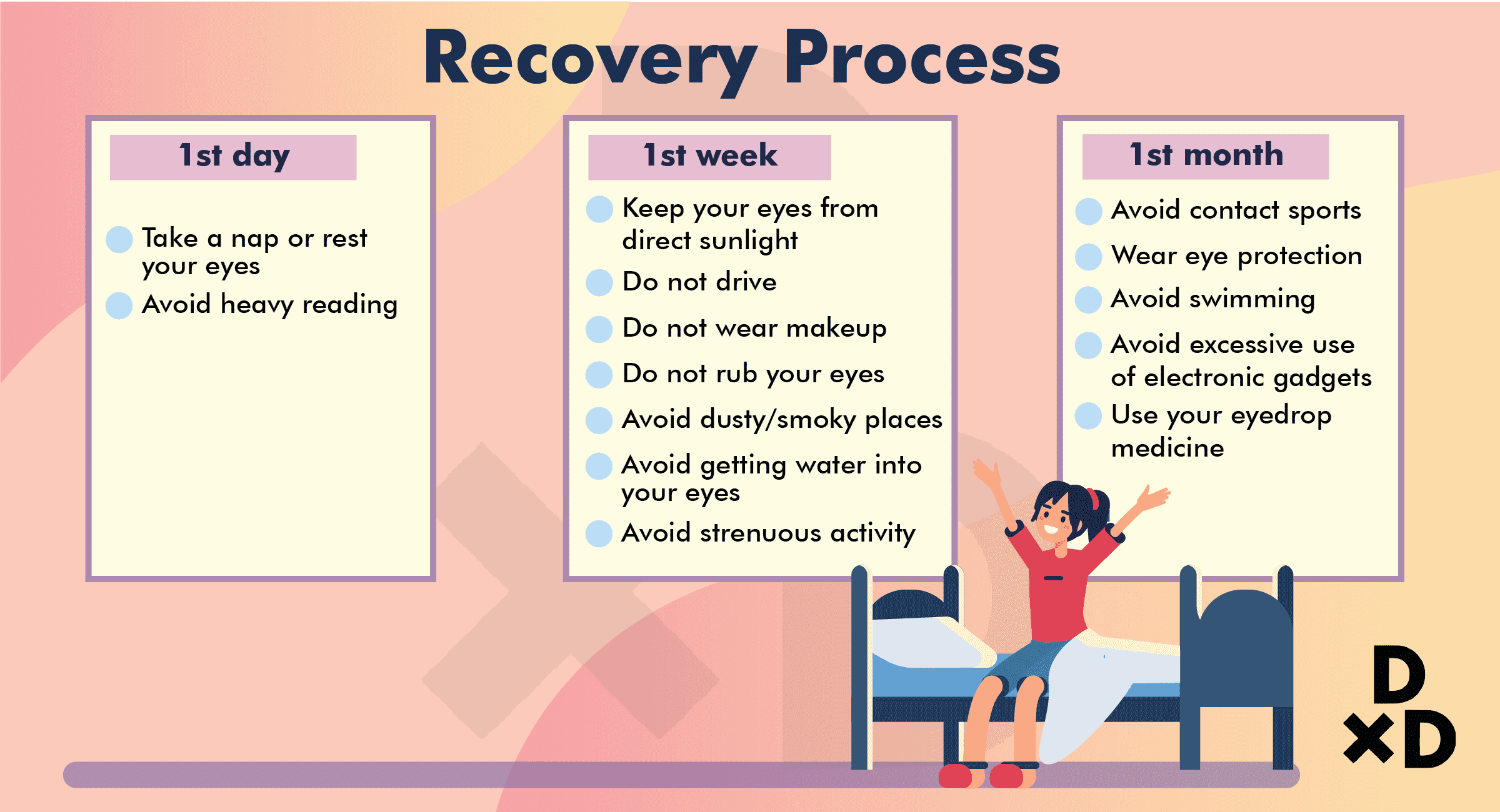
As mentioned previously, the average downtime for ReLEx SMILE is 3 days. That said, the final results will take up to 1-3 months to stabilise. During that time, it is important to be cautious.
A few general pointers you should take note of:
For the first day
- As much as possible, take a nap or at least rest your eyes.
- Avoid heavy reading that may stress your eyes.
- Lubricate your eyes generously.
- Use the medication as instructed.
For the first week
- Keep your eyes from direct sunlight. Wear sunglasses if you need to be outdoors.
- Do not wear makeup or get aesthetic treatments.
- Do not rub your eyes.
- Avoid dusty or smoky places.
- Avoid getting water into your eyes. Wash your face and hair with care, pat softly around your eyes when drying.
- Avoid strenuous activity and be sure to keep sweat from getting into your eyes.
For the first month
- Avoid contact sports or any activity with possible head trauma.
- Wear eye protection if your work requires you to be around chemicals.
- Avoid swimming, as well as public saunas, jacuzzi and hot yoga
- Avoid excessive use of electronic gadgets, e.g. phone, computer, TV.
- Use your medicated eyedrops & eye lubricant regularly as instructed by your eye doctor.
This is a very general list and may differ depending on your case. Your eye doctor will give you a more specific set of instructions and it is best to follow them. Following your doctor's advice will allow a smooth recovery and give you the best results!
What are some possible complications for ReLEx SMILE?

Overall, ReLEx SMILE is a safe and low-risk procedure. That said, there are still some possible side effects, such as:
- Dry eye
- Fluctuations in vision
- Night vision problems, such as glares and halos
- Lenticule Complications
These side effects are mostly temporary and they will improve with time.
Some complications may include:
- infections — these are rare and are usually resolved with the use of modern antibiotics.
- suction loss
Also, complications may arise during the procedure (e.g incomplete lenticule incision). In this case, your doctor might abort the ReLEx SMILE procedure on that day and recommend that you come back 2 days later after your cornea has healed to do a TransPRK procedure. However, these complications are extremely rare.
What should I expect during the pre-surgery consultation for ReLEx SMILE?

The first step is to get an eye evaluation done with an eye doctor to determine which procedure is suitable for you.
This is to make sure that your vision has been stable for the past 12 months. On top of that, the test will also check for the degree of your condition. As mentioned earlier, ReLEx SMILE can only be performed for cases of myopia (100–1,000 degrees) and astigmatism (up to 350 degrees).
Some general tests include: [6]
Manifest refraction (vision test)
This is to make sure that your vision has been stable for the past 12 months. On top of that, the test will also check for the degree of your condition. As mentioned earlier, ReLEx SMILE can only be performed for cases of myopia (100–1,000 degrees) and astigmatism (up to 350 degrees).
Check for other eye conditions
Your doctor will check for the presence of any eye diseases and determine your suitability for the surgery. For example, patients with glaucoma or cataract may not be suitable candidates for laser vision correction, including ReLEx SMILE.
Analyse your cornea
Your eye doctor will measure the thickness and shape of your cornea to assess the likelihood of cornea stability after the surgery.
Pupil dilation test
Your pupil will be dilated to begin the examination of all parts of your eye, including the retina and optic nerve. After the test, some people tend to be very sensitive to bright lights. I would recommend bringing a pair of sunglasses along to the consultation!
As a general guide, bring your last prescribed contact lenses or glasses with you. Do note that you will have to stop wearing contact lenses a few days before the consultation. That is 3 days for soft lenses and 10 days for hard lenses.
On top of that, be sure to declare all existing medical conditions and the medicines you are currently taking. As mentioned earlier, some conditions can increase the risk of failure and complications for a ReLEx SMILE procedure.
Once deemed suitable, you should discuss with him/her your expectations for the surgery. Before deciding, you should also do some research on what to expect during and after the surgery.
How do I prepare for a ReLEx SMILE procedure?

Once you are deemed suitable and have set a date for the procedure, there are certain things you should note:
Do not wear contact lenses
You need to stop using contact lenses for a few days before the surgery. At least 3 days for soft contact lenses and 10 days for hard/rigid gas permeable contact lenses [9].
Do not wear any eye makeup
Foreign molecules in makeup can irritate your eye and may get in the way of the surgery.
Arrange for someone to pick you up
ReLEx SMILE is an out-patient treatment. The whole process is also done within 15 minutes. That said, your eyes may still feel numb, gritty, and sensitive to light for a few hours after the surgery. Though this is not a must, I highly recommend getting someone to pick you up. Otherwise, if you were to have your procedure done in my clinic, our staff will be more than happy to hail a cab for you.
Eat and take your medicine as normal
Unless stated otherwise, there is no need to fast or stop taking any medicines before the procedure. Do check with your eye doctor if you are unsure.
There may be more precautions depending on your condition, so be sure to ask your doctor.
What is the laser technology used for the ReLEx SMILE procedure?
The smile procedure is performed using a femtosecond laser machine. at Clearvision, we are using the Zeiss VisuMax machine.
What is the cost of ReLEx SMILE in Singapore?
In both hospitals and private clinics, the ReLEx SMILE itself can cost anywhere between $5,000 and $6,000.
There are additional factors that can affect the cost:
- Test and consultation BEFORE the procedure. This is the first consultation I mentioned in the previous section. It is important to determine your suitability with ReLEx SMILE or other eye surgery methods.
- Check-up and reviews AFTER the procedure. In general, you may need to go for further reviews 1 week, 1 month, and 6 months after the surgery until the results stabilise. Some clinics will include the cost of the follow-up consultation as part of their surgery pricing
(Read this post for more information on LASIK costs in Singapore).
Can I use Medisave for ReLEx SMILE?
Unfortunately, since LASIK and other vision correction treatments are considered elective surgery procedures (non-essential), Medisave cannot be used to pay for these treatments.
In most cases, no. This is because your eyes are not considered to be suffering from any illness.
However, there are some exceptions. You can claim Medisave if:
- There is at least 300 degrees (-3.00) difference between your left and right eyes
- AND you are medically certified to be intolerant to glasses and contact lenses
For ReLEx SMILE, you can claim up to $1,200 with Medisave. For more details, do check with your clinic.
What about private insurances?
LASIK procedures are not covered under private insurance too.
What’s the difference between ReLEx SMILE and other treatments?
This is the question I get from all of my patients. It can indeed be confusing and you should always be open to all the options. Get a consultation and ask your doctor which one is most suitable for you.
ReLEx SMILE vs Bladeless LASIK
LASIK is undoubtedly the most common eye procedure in Singapore. It is also the same case worldwide. The main difference is that in bladeless LASIK:
- A flap is created with a femtosecond laser.
- Another laser will then sculpt the cornea correcting the refraction.
ReLEx SMILE
Bladeless LASIK
Laser
1 (femtosecond)
2 (femtosecond and excimer)
Flap
No
Yes
Incision
2 - 4 mm
22 mm
Required cornea thickness
at least 500 microns
at least 500 microns
Correction Range*
Myopia: 200 - 700degrees
Astigmatism: up to 500 degrees
Hyperopia: NA
Myopia: up to 800 degrees
Astigmatism: up to 500 degrees
Hyperopia: up to 400 degrees
Cost
$5,000 - $6,000
$3,500 - $4,500
Side-effects
Dry eye (+)
Halos & glares
Fluctuation in vision
Lenticule Complications
Dry eye (++)
Halos & glares
Fluctuation in vision
Flap dislocation or dislodgement
Though rare, it can cause corneal ectasia
*The correction range also depends on the thickness and shape of your cornea.
You may be confused about the differences between LASIK and bladeless LASIK. The difference lies in the tool used to create the flap.
When LASIK was first started, a blade called microkeratome is used to create the flap. However, a laser is now more common. The laser is safer and produces a more consistent result. You can always consult your doctor to see which one is more suitable.
Also read: The Complete Guide to LASIK in Singapore (2020)
ReLEx SMILE vs Advanced Surface Ablation (ASA)
Just like ReLEx SMILE, ASA procedures are also flapless. It is based on reshaping the shape of the cornea’s curvature. This means that there is no risk of flap complications and also a lower chance of developing dry eye.
An example of an ASA procedure is TransPRK where the excimer laser will first remove the surface layer. Immediately after that, the same laser is used to reshape the cornea.
For TransPRK, the procedure requires a longer recovery time (4-6 days) than ReLEx SMile (2-3days)
ASA procedures can be used to treat mild to moderate cases. That is:
- Myopia: up to 1000 degrees
- Astigmatism: up to 500 degrees
- Hyperopia: up to 400 degrees
After the procedure, your doctor will insert a bandage contact lens. This is to protect the cornea while the affected top surface layer grows back. With this method, the recovery period tends to be longer. For the first 2 days, you should definitely rest. You may have to wait for 5-7 days to go back to work.
The estimated cost of ASA is around $3,600-6,000.
In the end, it’s all about you
When you are deciding which procedure or which doctor you should go to for your eye, the first step is always a consultation. This is because:
- You should get a complete check to determine which method is most suitable for you.
- You should also be comfortable and have the same expectations as the doctor!
There are hundreds of eye doctors across Singapore. There is really no saying who is better. That said, you can always check what technologies they are using and also the experience of the doctor. If possible, get referrals from your family and friends!
I wish you the best of luck!
Would you like to ask any related health questions?
You can Ask A Doctor right away, or view the complete list of Human Sessions.
